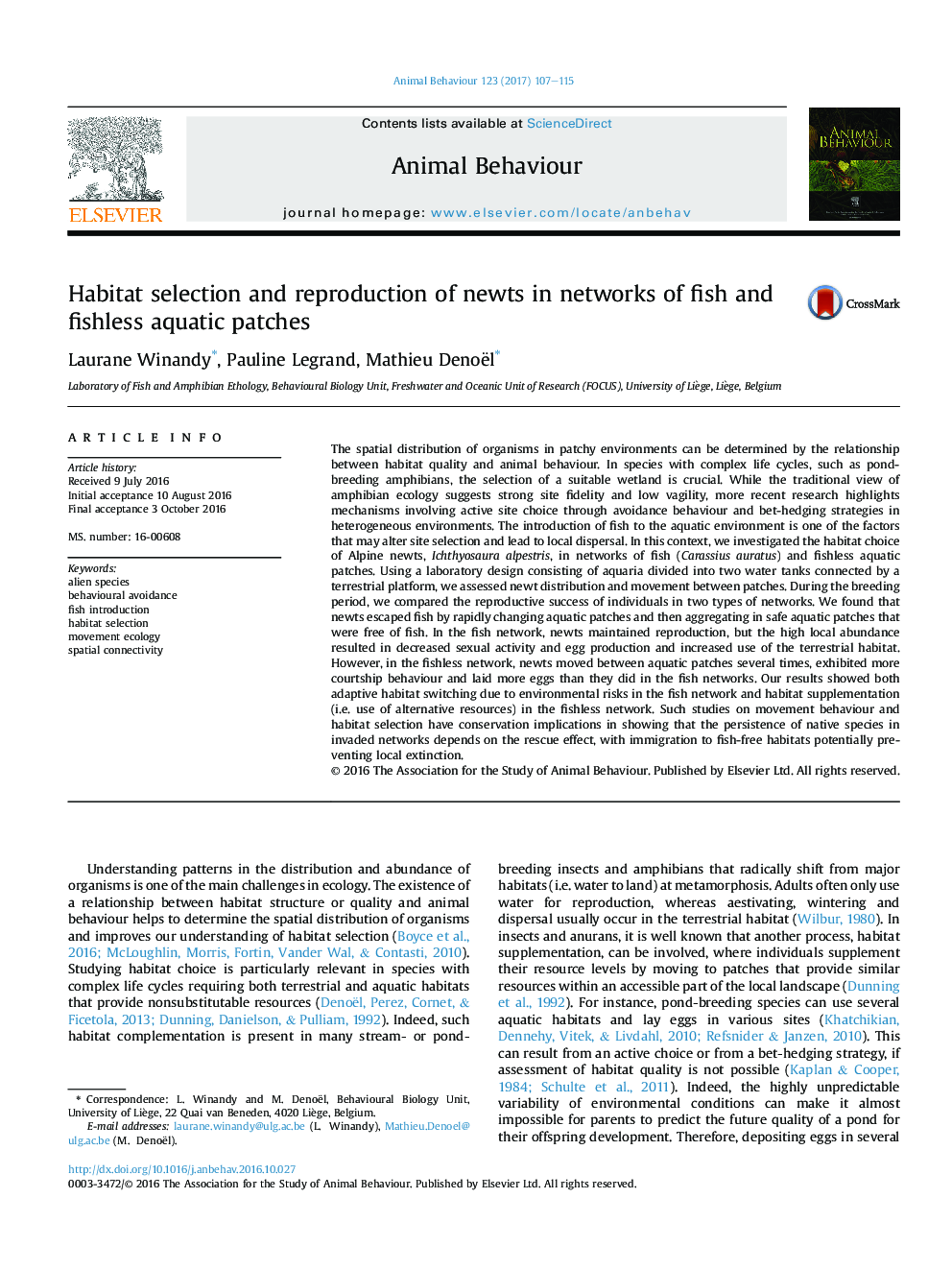| کد مقاله | کد نشریه | سال انتشار | مقاله انگلیسی | نسخه تمام متن |
|---|---|---|---|---|
| 5538575 | 1552205 | 2017 | 9 صفحه PDF | دانلود رایگان |
عنوان انگلیسی مقاله ISI
Habitat selection and reproduction of newts in networks of fish and fishless aquatic patches
ترجمه فارسی عنوان
برگزاری محل برگزاری و تولید مثل در نیوجرسی در شبکه های ماهی و تکه های آبزی ماهی بدون ماهی
دانلود مقاله + سفارش ترجمه
دانلود مقاله ISI انگلیسی
رایگان برای ایرانیان
کلمات کلیدی
گونه های بیگانه، اجتناب از رفتار، معرفی ماهی، انتخاب زیستگاه، محیط زیست حرکتی، اتصال فضایی،
موضوعات مرتبط
علوم زیستی و بیوفناوری
علوم کشاورزی و بیولوژیک
علوم دامی و جانورشناسی
چکیده انگلیسی
The spatial distribution of organisms in patchy environments can be determined by the relationship between habitat quality and animal behaviour. In species with complex life cycles, such as pond-breeding amphibians, the selection of a suitable wetland is crucial. While the traditional view of amphibian ecology suggests strong site fidelity and low vagility, more recent research highlights mechanisms involving active site choice through avoidance behaviour and bet-hedging strategies in heterogeneous environments. The introduction of fish to the aquatic environment is one of the factors that may alter site selection and lead to local dispersal. In this context, we investigated the habitat choice of Alpine newts, Ichthyosaura alpestris, in networks of fish (Carassius auratus) and fishless aquatic patches. Using a laboratory design consisting of aquaria divided into two water tanks connected by a terrestrial platform, we assessed newt distribution and movement between patches. During the breeding period, we compared the reproductive success of individuals in two types of networks. We found that newts escaped fish by rapidly changing aquatic patches and then aggregating in safe aquatic patches that were free of fish. In the fish network, newts maintained reproduction, but the high local abundance resulted in decreased sexual activity and egg production and increased use of the terrestrial habitat. However, in the fishless network, newts moved between aquatic patches several times, exhibited more courtship behaviour and laid more eggs than they did in the fish networks. Our results showed both adaptive habitat switching due to environmental risks in the fish network and habitat supplementation (i.e. use of alternative resources) in the fishless network. Such studies on movement behaviour and habitat selection have conservation implications in showing that the persistence of native species in invaded networks depends on the rescue effect, with immigration to fish-free habitats potentially preventing local extinction.
ناشر
Database: Elsevier - ScienceDirect (ساینس دایرکت)
Journal: Animal Behaviour - Volume 123, January 2017, Pages 107-115
Journal: Animal Behaviour - Volume 123, January 2017, Pages 107-115
نویسندگان
Laurane Winandy, Pauline Legrand, Mathieu Denoël,
